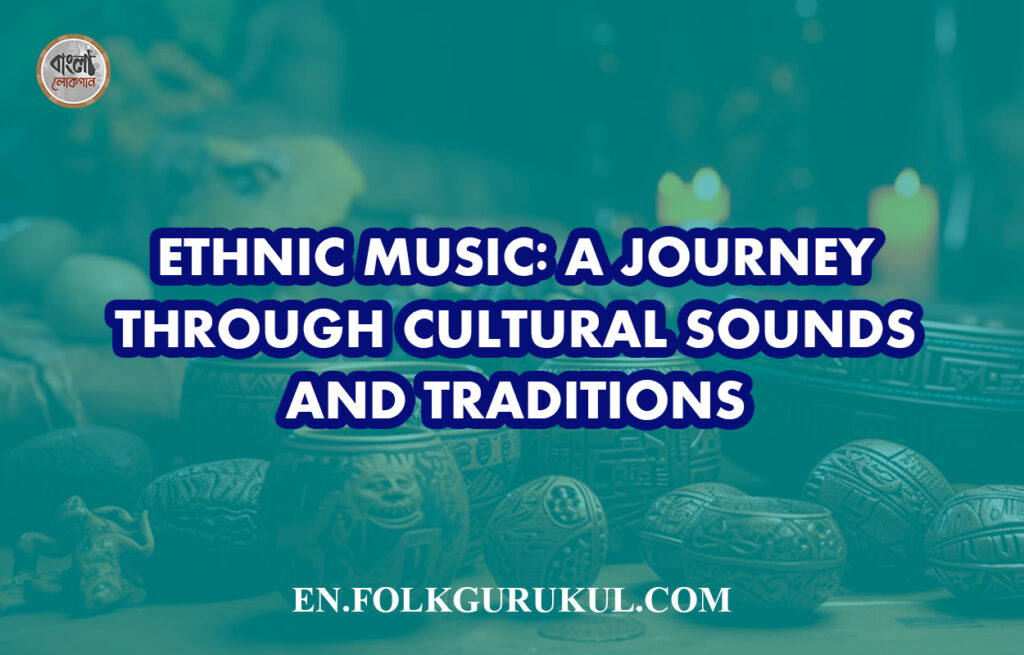Ethnic music, often referred to as traditional or folk music, is a vibrant and integral aspect of the world’s diverse cultures. It encompasses a wide range of musical expressions that are deeply rooted in the traditions and histories of various ethnic groups. From the rhythmic drumming of West Africa to the melodic strains of Indian classical music, ethnic music provides a window into the soul of different communities, reflecting their values, stories, and everyday experiences. This article explores the significance of ethnic music, its diverse forms, and its role in preserving cultural heritage.
Ethnic Music
The Essence of Ethnic Music
Ethnic music is characterized by its strong connection to the cultural identity of a community. Unlike mainstream genres that often appeal to a broad audience, ethnic music is deeply ingrained in the customs, rituals, and daily life of specific groups. It often serves as a medium for storytelling, spiritual expression, and social cohesion. The music is usually performed using traditional instruments and techniques passed down through generations, making it a living tradition that evolves while retaining its core essence.
Forms of Ethnic Music
Ethnic music varies widely across the globe, reflecting the rich tapestry of human culture. Here are some notable forms:
1. African Drumming and Dance
– In many African cultures, drumming and dance are central to social and ceremonial life. The rhythms of djembe, talking drums, and balafon, along with the accompanying dances, are used in rituals, celebrations, and storytelling. These performances often involve complex polyrhythms and call-and-response patterns that are integral to the community’s social fabric.
2. Indian Classical Music
– Indian classical music, with its two primary traditions—Hindustani (North Indian) and Carnatic (South Indian)—is renowned for its intricate compositions and improvisational elements. It features a rich array of instruments, such as the sitar, tabla, and veena, and is based on ragas (melodic frameworks) and talas (rhythmic cycles). This music is deeply tied to spiritual practices and religious ceremonies.
3. Native American Music
– Native American music encompasses a diverse range of styles and traditions across different tribes. Common elements include the use of drums, flutes, and vocal chanting in rituals, healing ceremonies, and storytelling. Each tribe has its own unique musical practices that reflect their cultural beliefs and natural environment.
4. East Asian Traditional Music
– East Asian countries such as China, Japan, and Korea have rich musical traditions that include the use of instruments like the guzheng, koto, and gayageum. Traditional Chinese opera, Japanese Noh and Kabuki theatre, and Korean pansori are examples of how ethnic music is woven into performing arts, reflecting historical and cultural narratives.
5. Latin American Folk Music
– Latin American folk music is characterized by its rhythmic diversity and incorporation of indigenous, African, and European influences. Styles such as samba, tango, and mariachi are integral to cultural celebrations and festivals across the region. Traditional instruments include the guitar, charango, and maracas.
The Role of Ethnic Music in Cultural Preservation
Ethnic music plays a crucial role in preserving and transmitting cultural heritage. As societies modernize and globalize, there is a growing concern about the loss of traditional practices and knowledge. Ethnic music helps to keep these traditions alive by:
1. Preserving History and Stories
– Many ethnic music forms are used to narrate historical events, legends, and cultural practices. Through songs and performances, communities can preserve their history and pass it down to future generations.
2. Strengthening Cultural Identity
– Ethnic music fosters a sense of identity and belonging within a community. It provides a way for people to connect with their heritage and express their cultural values. Participation in traditional music-making helps individuals maintain a link to their ancestors and cultural roots.
3. Facilitating Cross-Cultural Understanding
– Sharing ethnic music with a broader audience can promote cross-cultural understanding and appreciation. Through music, people can learn about different cultures and traditions, fostering respect and empathy among diverse communities.
Challenges and Future Directions
While ethnic music is a vital part of cultural heritage, it faces several challenges in the modern world:
1. Globalization and Cultural Dilution
– Globalization has led to the widespread dissemination of mainstream music, sometimes overshadowing traditional ethnic forms. This can result in the dilution or loss of unique musical traditions as younger generations are drawn to more popular genres.
2. Commercialization
– The commercialization of ethnic music can sometimes lead to the exploitation of cultural elements. It is important to balance the promotion of traditional music with respect for its cultural significance.
3. Preservation Efforts
– Efforts to document and preserve ethnic music are crucial. This includes recording performances, researching traditional instruments, and supporting communities in maintaining their musical practices. Cultural institutions and ethnomusicologists play a key role in these efforts.
Ethnic music is a profound and dynamic aspect of human culture that reflects the diverse experiences, beliefs, and values of different communities. Its role in preserving cultural heritage, strengthening identities, and fostering cross-cultural understanding is invaluable. As the world continues to evolve, it is essential to support and respect the preservation of ethnic ‘music, ensuring that these rich traditions continue to thrive and inspire future generations. Through appreciation and active efforts to safeguard ethnic’ music, we can celebrate and honor the unique musical expressions that contribute to the world’s cultural diversity.
See More:

